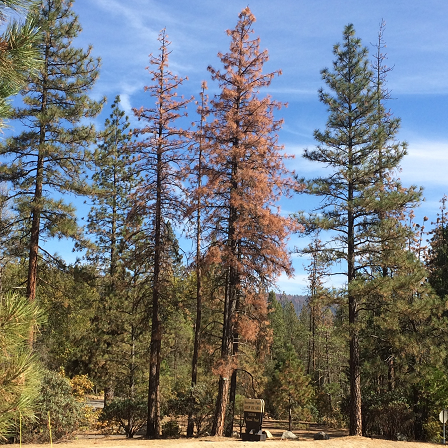Biomass Incineration

Biomass incineration generates electricity using the same process as coal combustion, but instead of coal, biomass incineration facilities burn wood. And like coal combustion, conventional biomass incineration is highly polluting.
Biomass incineration releases criteria pollutants and carbon dioxide in quantities that exceed methane gas power plants and even coal power plants in some cases. Even the newest facilities that convert trees into methane gas are highly polluting.
A Flagging Industry Grasping at Straws
In California today there are about 20 biomass incineration facilities in operation. That’s down from the 1980s number of 63 facilities.
The industry’s sharp decline is a result of its high-priced electricity and the declining costs of cleaner sources of electricity like solar and wind energy.
In recent years, industry lobbyists have pointed to biomass incinerators as a tool to fight wildfire and as an alternative to open pile burning. Many of the industry’s claims on the efficacy of wildland tree removal projects at mitigating wildfire damage are suspect at best.
However, there are trees that may fall on buildings or infrastructure. There are also trees that are located in the 100-foot defensible space area around a home which science says is the most important area to maintain to save lives and property. These trees do need to be removed and dealt with responsibly. But responsibly does not include incineration.
There are Alternatives to Combustion
Burning trees -- whether in a pile, an antiquated incinerator, or a new-fangled methane “biogas” plant -- is the last thing that California should promote. Instead, the state should support sustainable and appropriately sited uses for biomass.
Sierra Club California produced the Moving Beyond Incineration report in November of 2019 to estimate the amount of trees that will be removed from the forest in the coming years and look at non-polluting uses for these trees. There are better uses than incineration for biomass waste that result in useful products, sustainable jobs and lower emissions.
California must reject the notion that the most environmentally and health-protective use for a tree is incineration. Instead, it should prioritize biodiversity-focused forest management, community-focused wildfire safety, and non-combustion uses for the trees that must be removed.
Want to Know More? Download this document:
California Biomass Incinerators Fact Sheet
California Forests and Biomass Fact Sheet
"Moving Beyond Incineration" Report